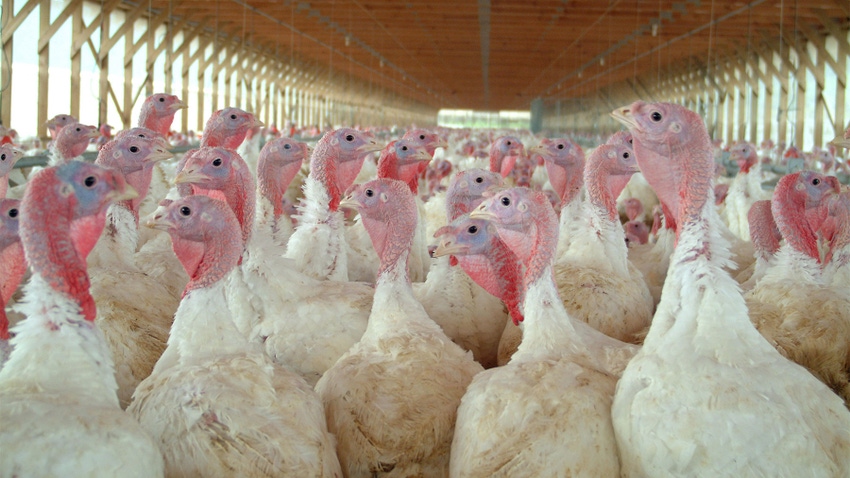
Minnesota’s first fall case of highly pathogenic avian influenza was confirmed Oct. 11 in a commercial turkey flock in Meeker County, according to the Minnesota Board of Animal Health.
Samples were confirmed positive by the USDA’s National Veterinary Services Laboratories in Ames, Iowa. The site is quarantined, and the 140,000 birds on the premises were depopulated to prevent the spread of the disease.
This case is the first in the state since this spring when two backyard flocks were confirmed — LeSueur County in April and Nobles County in May.
“Unfortunately, HPAI seems to keep popping up during the seasonal migrations in Minnesota,” Brian Hoefs, state veterinarian, says in a BAH press release. “Anyone who has poultry should take this detection as a clear sign to keep a close eye on their flock and initiate your strongest biosecurity practices.”
With that in mind, poultry owners whether commercial or backyard flocks should contact their veterinarian immediately if they see any of the following signs or symptoms in their flock.
decrease in feed or water intake
swelling or purple discoloration of head, eyelids, comb, wattle and hocks
decrease in egg production
sudden, unexplained death
extreme depression
very quiet
difficulty breathing
Michael Crusan, BAH communications director, encourages flock owners to complete the agency’s Report Sick Birds form online if they suspect their birds are sick or if there are unexplained deaths in the flock.
While early detection is critical to halt the spread, biosecurity keeps HPAI and other viruses and diseases at bay and stops the spread should the flock become infected. Owners of large and small flocks should review their biosecurity plans to maintain the health of their birds. The University of Minnesota Extension provides a webpage with biosecurity resources for commercial and backyard flocks to protect against disease introduction and spread.
Among the plethora of resources found on the U-M page are two links of utmost importance to flock owners: Poultry biosecurity basics and Writing biosecurity plan using National Poultry Improvement Plan audit principles. It is imperative that producers become well-versed in biosecurity measures — and that they have a plan in place and adhere to it.
According to U-MN and NPIP, a successful biosecurity plan comes down to two main parts:
Describing the biosecurity culture you have on your farm.
Documenting the steps you take to protect the health of your flock.
Veterinarians who receive reports of clinical signs of avian influenza, should call the Minnesota Avian Influenza Hotline at 833-454-0156 or submit a sick bird report online. If it is after hours or on the weekend, call the Minnesota duty officer at 800-422-0798. Subsequent HPAI cases will be posted on the board’s website.
The BAH reminds consumers that poultry is safe to eat, and proper handling and cooking of poultry and eggs to an internal temperature of 165 degrees F is always advised.
Minnesota Board of Animal Health and the University of Minnesota Extension contributed to this article.
About the Author(s)
You May Also Like






